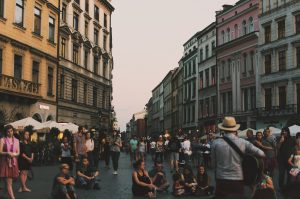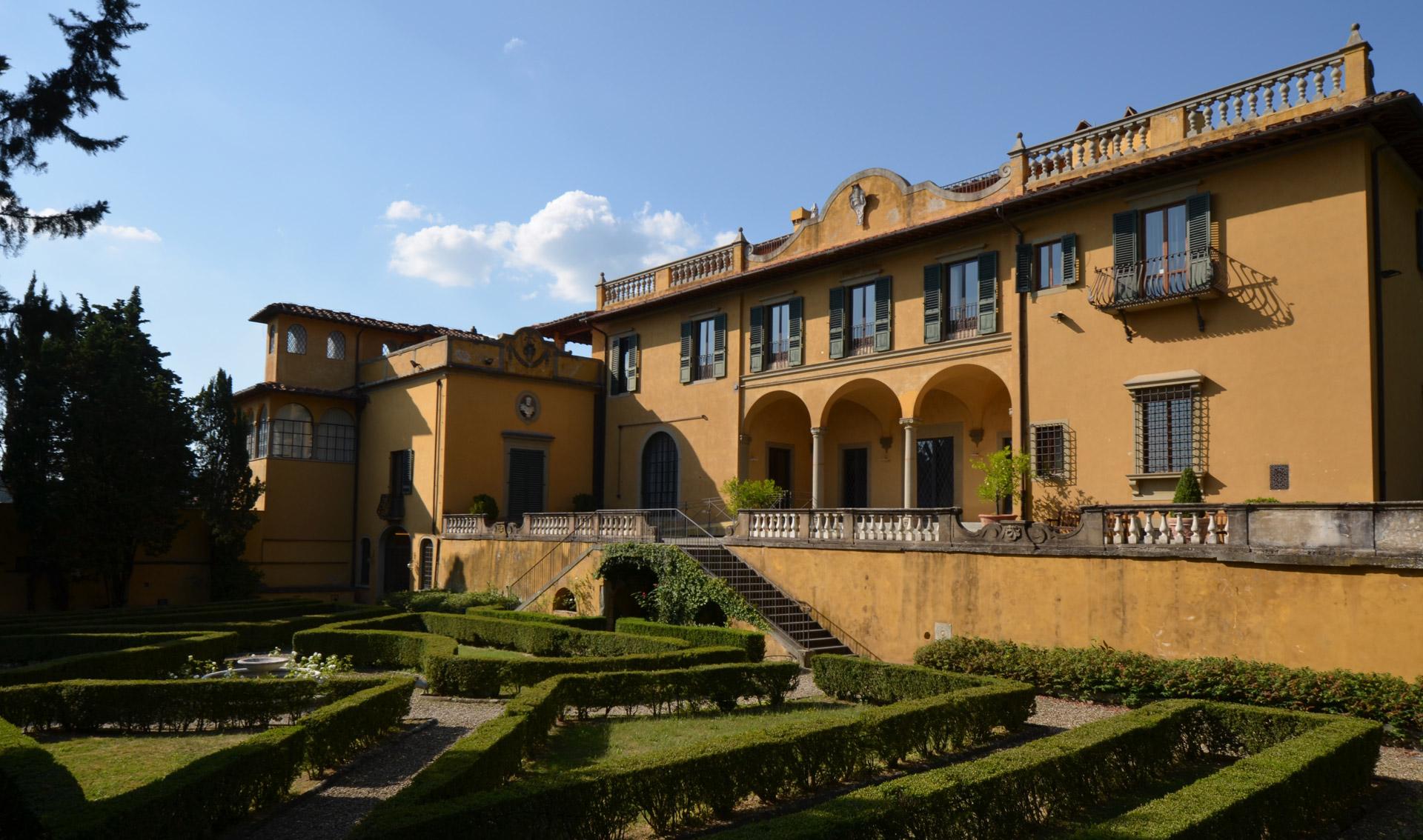
Read more
Blog, Migration Governance
Polish response to the refugee crisis: where the wild things are?
When, on 11 September 2015, the Polish prime minister signed a declaration of the Visegrad Group on the migration crisis in Europe, it seemed that the division between old and new Europe stood beyond...
Over the past years, the traditional migration routes that were used to try to breach the walls of Europe were those that connected the African coasts to southern Spain and, to a larger extent, southern Italy. Sicily in particular became the region of first entry, and the island of Lampedusa, in between the African and Sicilian coasts, started to receive a significant daily influx of migrants.
The resulting pressure on infrastructure and services has been constant. With the rising number of arrivals since Spring, this pressure has become unsustainable. For this reason, the Italian government devised a plan to diversify the ports of arrivals for rescued migrants, turning to other regions of southern Italy. A problematic case has been that of Sardinia.
Despite directly facing the African coasts, the marine routes to Sardinia have been rarely used by smugglers because of the distances involved. Small boats have occasionally reached the southern coast near the Sardinian capital, Cagliari, but in very small figures compared to the island of Sicily.
For this reason, when ships deployed in FRONTEX’s mission started to reach Cagliari, resources were largely inadequate. The first group of migrants that arrived in Cagliari this summer, after having received assistance and medical screening in Sicilian ports, had been taken to Sardinia to await the outcome of their application. This group comprised mainly Eritrean migrants. However, to general puzzlement, having arrived in Sardinia they asked where they could catch the train to Rome. Nobody had informed them that they were being taken to an island – another island – once again separated by the ocean from the destination for which they had risked their lives: continental Europe.
The local authorities, doing their best to accommodate everyone despite lack of means and experience, had arranged for groups of migrants to stay in various parts of Sardinia, hosted in hotels or B&Bs across the island. For those not ‘lucky’ enough to find a place in Cagliari or Sassari, the biggest cities, ending up in a village with a few thousand inhabitants surrounded by nothing but arid land was yet another blow. The problems that arise from this feeling are the most difficult situations that local authorities have to deal with, needing to swiftly find space for new arrivals whilst facing the opposition of the migrants themselves, who instinctively react against the feeling of being trapped.
The case of 200 Eritrean migrants made this clear. Their determination led them to storm back to Cagliari from the inland, sleeping in the streets in front of the city hall for days until a solution for them was found. With the help of civil society, the asylum seekers were looked after safely before being accompanied back to the mainland. However, not all the migrants that arrive can expect the same.
To date, around 3000 migrants have come to Cagliari’s port. However, after the first groups were taken to Sardinia as part of a national relocation strategy, now the ships involved in FRONTEX’s rescue operations take migrants directly to Cagliari. This has inevitably led to a new challenge, with hundreds of migrants rapidly needing medical screening and assistance from people without the means or the experience necessary to supply them.
Nevertheless, in light of this emergency situation, coordination amongst the interested actors has been swift. The Red Cross has been doing an incredible job with volunteers working night and day to screen and assist the newly arrived migrants. The number of arrivals has been steadily growing, due to the fact that ships are now involved in several rescue operations in a single day, sometimes even rescuing over 4000 migrants per day. This shows how much the authorities need to diversify the destination ports. Even though resources have been insufficient, hundreds of asylum seekers at a time have had to be taken to Cagliari.
In the past month, three major operations have seen 500, 800 and 900 migrants arriving. According to the quotas set out by the government earlier this year, this should have completed the number of asylum seekers to be taken to Cagliari for this year. However, further arrivals might well take place due to the city’s location and the fact that Sardinia has proved to be hospitable and ready to do its fair share, in contrast to northern (and richer) regions of Italy in which the political influence of the ‘Lega Nord’ has been impeding an efficient relocation. In any case, whether further newcomers arrive or not, Sardinia still has to deal with some significant issues arising from the migrants who have already come (despite the fact that the numbers are relatively small compared to Sicilian ports).
Firstly, and most importantly, sending migrants to an island like Sardinia remains problematic, as an internal distribution in centers and infrastructures consonant to their needs means that groups are shuffled around inner Sardinia in which no migrant community is settled, and where local communities are still based on old habits and lifestyles that make contact and integration difficult.
For those lucky enough to stay around Cagliari, most available spaces are in the ‘CARA’ (Centre for Reception of Asylum Seekers), an old military barracks on the outskirts of Cagliari. The life in the centre greatly resembles that of a prison, with numerous bunks of beds in each room, curtains instead of doors and video security.
Most migrants awaiting the outcome of their asylum application in this centre come from Sub-Saharan Africa, like most of those that end up waiting in Sardinia for long periods of time. Compared to other regions of origin, the Sub-Saharan community in Cagliari (most notably the Senegalese one) is well established, providing a base of support for newcomers. In contrast, this is not present in rural areas of Sardinia, where migrants have little or no access to already established communities: a problem that exacerbates the alienation of these ‘stranded’ asylum seekers. The fact that they can’t work while waiting for the outcome of their application only increases the feeling of being alien to Italian society, and in turn fuels discontent among local inhabitants towards ‘workless’ migrants who ‘only take and never give’.
For local authorities, therefore, the ideal solution is that the migrants’ stay in Sardinia is only temporary. And certainly for many groups of migrants themselves, this is also desirable. However, we need to keep in mind that Sardinia has a population of just 1.6 million, with a very low density rate of 68 people per square kilometer. Furthermore, many of the villages hosting the refugees are witnessing ever-increasing emigration to the major cities and the Italian and European mainland, thereby losing the workforce necessary to keep alive a micro economic system based on agriculture.
Given that most of the migrants that come from Sub-Saharan Africa have some kind of agricultural background (and in some cases real expertise), it would be better to start thinking of allowing them to join the workforce and thus contribute to the local economy, rather then increasing their alienation in a condition of semi-liberty, completely dependent on a state and society to which they appear to be merely a burden. With the number of migrants soaring, and an evident need for labour in some sectors of the Italian economy, restricting access to the labour market for long periods of time (the current legislation imposes a 6 month working ban on asylum seekers) benefits noone.
The number of arrivals from the coasts of Africa and from the Middle East clearly won’t halt any time soon. For this reason, together with pushing for an enhancement of European solidarity and burden sharing, the Italian response must not end with the rescue and medical screening of the migrants. The ‘what next’ question, especially vis-à-vis the current figures, is essential and the status quo unsustainable. The Sardinian example offers a case study of how important it is to work with the possibilities that are present and use the arriving workforce, a factor that is important for the Italian communities and economy and also essential for ensuring that the integration process truly gets underway.
Luca Lixi is a PhD student at the University of Sheffield, conducting research on migration governance in Europe as part of the MIGPROSP project.

